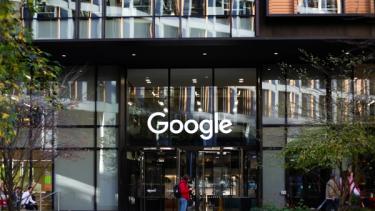Insight5 min read
How to write engaging copy that converts
Tue Feb 09 2021 | Marketing Team

- Insight
- Performance
- Content
Tags
We all know that writing copy that features high ranking keywords and phrases will help with Google rankings, but what then? You may have a page that receives a high volume of traffic, but if it doesn’t engage – and more importantly convert - the reader, what's the point?
Using emotive language that connects with the person behind the screen, we can improve conversion rates. But how? It’s a fairly simple answer: by writing copy that engages the reader on a psychological and sociological level.
Why do people buy a product or service?
There are several reasons why people buy a product or service. Part of our job is to figure out which reasons are the driving forces for our readers.
- 1Safety: The need for self-preservation is a timeless desire. Products or services that play on people’s fears and offer a solution are more likely to be a success. Similarly, fear of missing out also motivates people.
- 2Pleasure: We want things and experiences that make us feel good! We want to have a good time.
- 3Ego: We are all trying to ‘keep up’ with someone or showcase our Insta-perfect life. We all want the approval and admiration of our peers. If we can create the lifestyle the reader is after – they’ll be hooked.
- 4Relationships: Companies that use imagery of close family and friends are more successful because we have an inherent desire to be part of something. Using inclusive language creates these bonds.
- 5Health and wellness: We all aspire to be a healthier version of ourselves. And words that promote health and wellness will convince the reader that if they buy the product or service, they'll become a better version of themselves.
- 6Sense of purpose: We all want to feel like we have a sense of purpose. We should use language that endears the reader into thinking that the product or service on offer contributes to this sense of purpose/something greater than themselves.
- 7Growth and education: Smart is sexy. Anything that helps us grow as a person, and makes us feel smarter (and appear smarter – see point 3!), will attract more consumers!
- 8Convenience: We’re a time poor society and a product or service that provides a hassle-free experience is really what we're looking for.
Once you've worked out the biggest motivating factors for your audience, you'll know which emotions you want to elicit and therefore which words to use.
The thinker vs. feeler brain
We might like to think we're complex characters, but the majority of our decisions are based on gut instinct – this is the 'feeler brain'. Even decisions we think we're agonising over (like should we have more chocolate), all we're really doing is trying to rationalise the decision we've already made. And it's ultimately this feeling brain we need to entice when writing copy.
There are several ways we can do this and, when used correctly, it can have an enormous impact on conversion rates.
- 1Speak your reader’s language: People tend to respond better to short, simple words that echo the way they speak to friends. So, when writing copy, it's important to adopt a similar tone of voice.
- 2Trigger words: Some words provoke an instant reaction. Depending on which emotion you're channelling and by using trigger words, you can heighten that effect.
- 3Leverage emotional attachments: Most of us have emotional attachments – family, friends, pets, as well as attachments to inanimate objects or places. When creating copy, we can empathise with the reader by using language that leverages these emotional attachments to evoke strong memories.
- 4Turn negative emotions into something positive: Sometimes negative emotions like fear, anger and guilt can be the strongest motivators. But to use them to their full effect, you should turn these negative emotions into something positive. To do this, we must call attention to the negative emotion a reader may be feeling and play on these fears or insecurities. You can then show them how taking action – purchasing the product or service or getting in touch – will help resolve these negative feelings.
- 5Be a mind reader: Ultimately when writing copy that converts, the key is to be a mind reader. We need to know what our readers are thinking and feeling to write copy that resonates with them and that means really getting to know who you’re speaking to.
Transform your business with us
Are you wondering what your audiences’ motivating factors are? Maybe you want a bit more advice on which trigger words would work for you? Get in touch with our team of content marketing experts and brilliant wordsmiths to find out more about how we can help create engaging copy that’s not only effectively optimised but actually converts.


